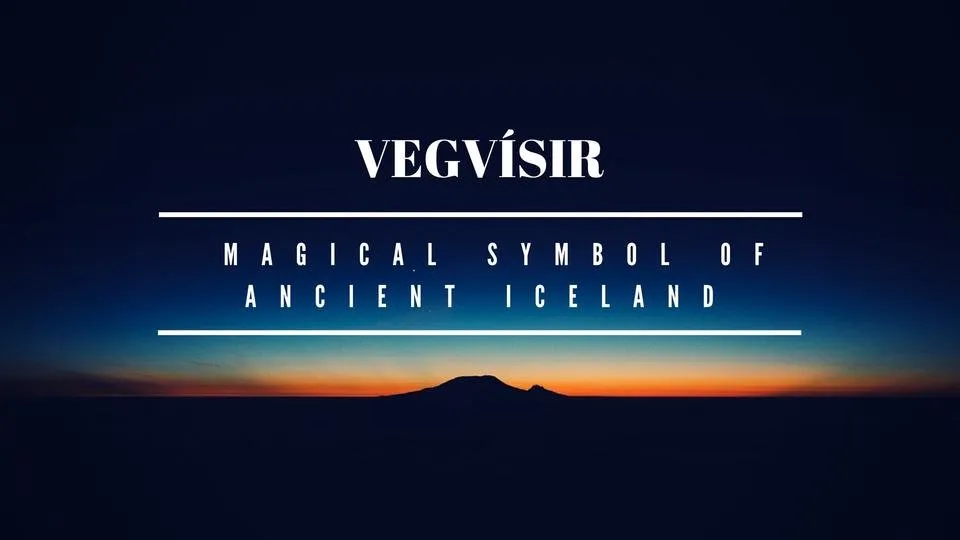
The Vegvísir is an ancient symbol of Icelandic origin whose purpose is to help its bearer to find the right path. We can find it in supports such as Huld's Manuscript and in the magical medieval book Galdrabók. One of its uses, which by the way still exist in Iceland, is to be painted on the door of your house, so that your home and your life will be like a ship with a compass and will move in the right direction. Today, it appears on numerous objects and places, but above all in the form of a tattoo. Let's learn more about this mysterious symbol and its origins.
The importance of magic in ancient Iceland
To understand Vegvísir, as any other symbol used as an amulet, spell or magic element, we must first know the great importance of the tradition of magic wizardry in Iceland, very ancient and highly influential on the native population. Sources of spells go back to the Middle Ages in old Nordic sagas, which are a unique part of Icelandic heritage. In ancient times, magic spells were as vital to Icelanders as food is to the body. They existed in all aspects of life and came as second nature to man, through his desires and fears: the individual's desire to understand and control fate, as well as the strength of nature, is reflected in the magic spells of the Icelanders.
Etymology of the word Vegvísir and its meaning
The word vegvísir derives from two Icelandic words: Veg and Vísir. Veg in turn comes from Vegur, which means path and Vísir is guide, so Vegvísir, symbolizes the force that guides us when we are lost, helps us not to err, to find our true path.
Different versions of the Vegvísir symbol
There are different versions of the symbol Vegvísir, here I will show you three of them, the ones that appear in books of relevance in terms of Icelandic symbolism, which are Huld's Manuscript, the Galdrabók and the Galdraskræða.
The Vegvísir in Huld's Manuscript
Vegvísir is one of many symbols that appear in Huld's Manuscript (the word Huld comes from hulda, which means secret), an 1860 book that contains research contents carried out in Iceland by Geir Vigfusson.
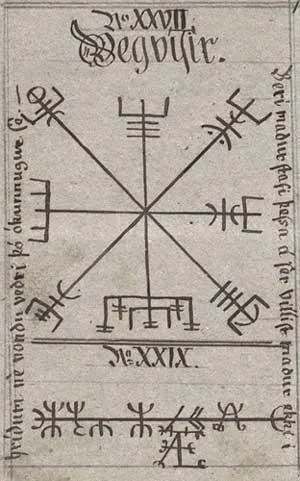
One page of the manuscript offers a drawing of the symbol Vegvísir, next to its name, and with the following quotation in Icelandic:
" Beri maður stafi þessa á sér villist maður ekki í hríðum né vondo veðri þó ókunnugur sá "
English translation:
" Carry this sign with you and you won't get lost in storms or bad weather, even though in unfamiliar surrounds "
Galdraskræða Skugga
A similar version of the Vegvísir appears in the book Galdraskræða Skugga, first published in 1940 by Jochum M. Eggertson (1896-1966), better known as'Skuggi', which means'shadow', a very prolific farmer and writer and somewhat controversial for his view of life, reflected in his books. The Galdraskræða was illustrated and handwritten by the author himself, and originally published only a limited edition of 150 numbered copies. This is a collection of nearly 200 ancient Icelandic folk spells and a collection of magic runes.
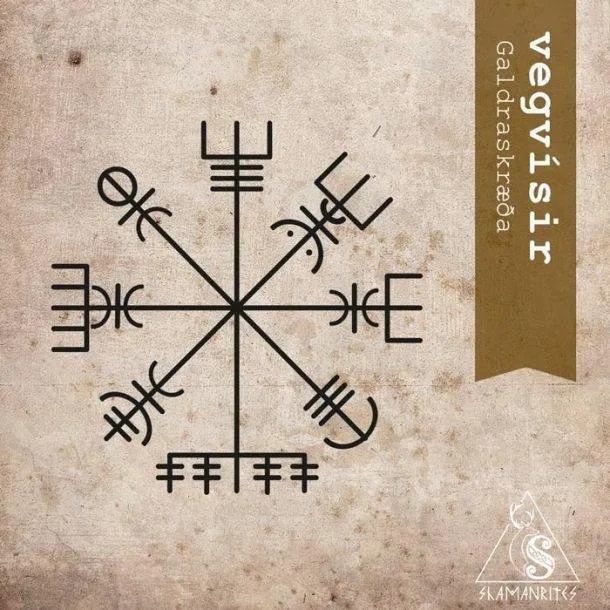
Recently, in 2013, designer Arnar Fells Gunnarsson redesigned this work for his final project at the University of the Arts in Iceland. It is a work in which he simplifies the graphic elements and the representation is clearer and cleaner, but always respecting the work of the original Skuggi. The colour chosen for the symbols is red, which symbolises the use of blood in the ancient rituals (while drawing the lines of the graphic elements with the blood, the spell is cast).
Galdrabók: Grimoire of Icelandic origin
But before this document, the Vegvísir appeared in the Galdrabók: a grimoire (book with magical content) of Icelandic origin dated around 1600. and made up of 47 dates. This book was composed of four different scribes: three Icelandic and one Danish, who worked with material from Iceland. Most likely, it started at the end of the 17th century until the middle of the 17th century.
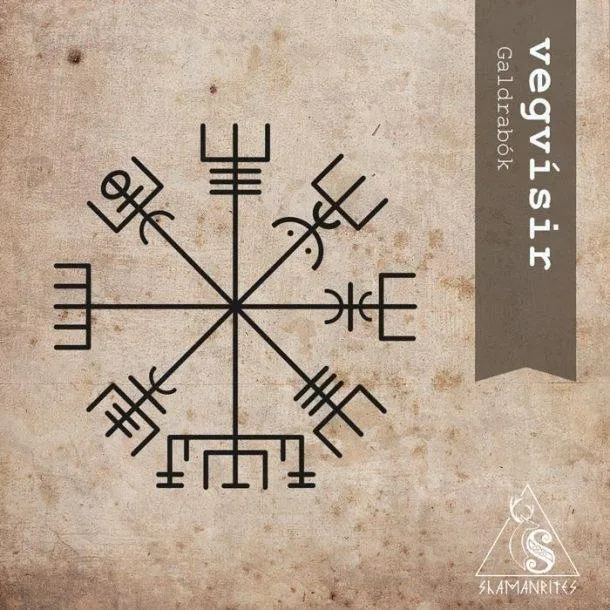
The Galdrabók quotations are written in runic and Latin and speak to us of symbolism, invocation of Christian entities, demons, pagan Nordic deities, use of magical herbs and gadgets, etc. Some of the spells are focused on protection, such as pregnancy problems, headaches, insomnia, spells, sea disorientation and plague. Others have the purpose of protecting the wearer, killing animals, finding thieves, sleeping people, causing flatulence, bewitching women and instilling fear in the enemy such as the Aegishjalmur (a word from the ancient Nordic: ægishjálmr, meaning helmet of agir).

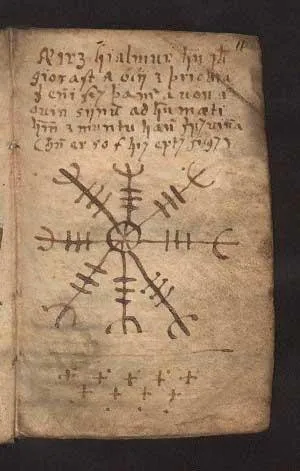
Edred Thorsson, (considered one of the greatest exponents in knowledge of runology and mysticism) author of the highly recommended book "Futhark: the magic of the runes".
Galdrakver: the version of "white magic"
There is another version of the Galdrabók called "Lbs 143 8th manuscript" which dates from 1670 and was first published in print in 2004 under the title "Galdrakver" or "little book of magic". The original is in the National University Library of Iceland in Reykjavik. This book differs from the Galdrabók in that it contains only white magic spells. The author is unknown.
You can see and enjoy this complete manuscript here.
Similarities with the wind rose
The similarity of the symbol Vegvísir with the wind rose and its eight cardinal points could easily be identified by the graphic elements that make it up. And not only that, but also, according to some sagas, the Vegvísir is related to an artifact used by the Vikings for navigation, as a solar compass or runic compass.
Finally and on a personal note, Vegvísir is one of the symbols that I like most for its meaning as well as for its visual graphics. It transmits good vibes to me and that's why I use everyday objects to decorate them with, for example, this mug, I love to drink tea while working. And what does the Vegvísir transmit to you? Do you use it?